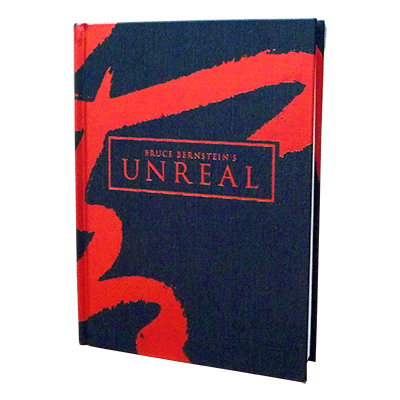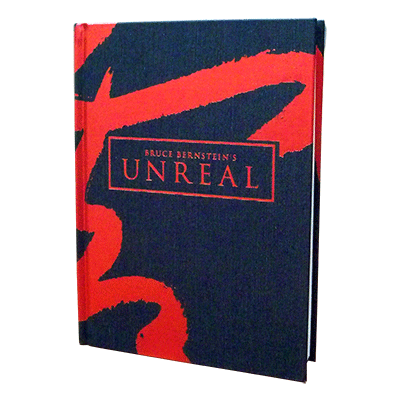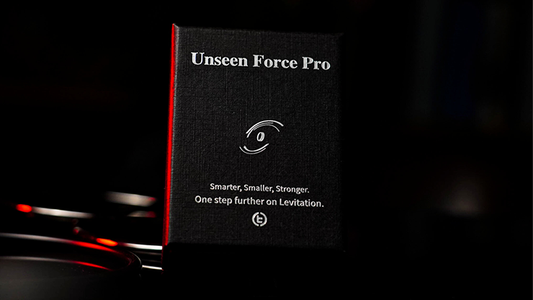Magic Tricks
You're a magician. You like magic tricks. That's why you're here, right?
Phew.
Well, we hand-curate the latest and greatest magic tricks for you. There's nothing we feature that is crap. And that's a promise.
-
Universal Smoke Watch by João Miranda
Regular price $250.00 USDRegular price$250.00 USDSale price $250.00 USD -
Unliftable - Light Heavy Deck by Iñaki and Javier Franco (Blue)
Regular price $29.95 USDRegular price -
Unliftable - Light Heavy Deck by Iñaki and Javier Franco (Blue)
Regular price $29.95 USDRegular price$29.95 USDSale price $29.95 USD -
Unliftable - Light Heavy Deck by Iñaki and Javier Franco (Red)
Regular price $29.95 USDRegular price -
Unliftable - Light Heavy Deck by Iñaki and Javier Franco (Red)
Regular price $29.95 USDRegular price$29.95 USDSale price $29.95 USD -
Unlocked By Gustavo Sereno and Gee Magic
Regular price $55.00 USDRegular price -
Unlocked By Gustavo Sereno and Gee Magic
Regular price $55.00 USDRegular price$55.00 USDSale price $55.00 USD -
 Sold out
Sold outUnmemorized Deck by Marcelo Insua
Regular price $30.00 USDRegular price -
Unmemorized Deck by Marcelo Insua
Regular price $30.00 USDRegular price$30.00 USDSale price $30.00 USD -
Unreal by Bruce Bernstein
Regular price $75.00 USDRegular price -
Unreal by Bruce Bernstein
Regular price $75.00 USDRegular price$75.00 USDSale price $75.00 USD -
Unsealed Gimmick for 18 + (18 Plus) by Bond Lee & Magiclism - Trick
Regular price $15.00 USDRegular price -
Unsealed Gimmick for 18 + (18 Plus) by Bond Lee & Magiclism - Trick
Regular price $15.00 USDRegular price$15.00 USDSale price $15.00 USD -
UNSEEN FORCE by TCC - Trick
Regular price $80.00 USDRegular price -
UNSEEN FORCE by TCC - Trick
Regular price $80.00 USDRegular price$80.00 USDSale price $80.00 USD -
UNSEEN FORCE PRO by TCC - Trick
Regular price $99.95 USDRegular price
Collection: Products
Talk about your brand
Magic Tricks: The Complete Guide to the Art of Wonder
Magic has captivated audiences for thousands of years, from ancient Egyptian performances to modern digital illusions. This comprehensive guide explores everything you need to know about magic tricks, whether you're a complete beginner looking to learn your first card trick or an experienced performer seeking to refine your craft.
What Are Magic Tricks?
Magic tricks are carefully designed illusions that create moments of wonder by appearing to defy the laws of nature. At their core, all magic tricks fall into eight fundamental categories that have remained unchanged throughout history:
The 8 Types of Magic:
- Appearance - Making objects materialize from nothing
- Vanish - Causing objects to disappear completely
- Transformation - Changing one thing into another
- Restoration - Repairing something that was broken or destroyed
- Transposition - Making objects switch places
- Penetration - Passing solid objects through other solid objects
- Prediction - Foretelling future events or revealing unknown information
- Levitation - Making objects or people float in midair
These categories encompass thousands of different tricks, from simple coin vanishes to elaborate stage illusions.
Types of Magic Performance
Close-Up Magic
Close-up magic is performed in intimate settings with small audiences, typically within arm's length of the spectators. This style focuses on:
- Card tricks using sleight of hand
- Coin manipulation and vanishes
- Mind reading demonstrations
- Rubber band magic and everyday object illusions
Close-up magic allows for strong audience interaction and creates powerful personal connections between performer and spectator.
Parlor Magic
Parlor magic bridges the gap between close-up and stage magic, designed for medium-sized audiences of 20-100 people. Common parlor effects include:
- Sponge ball routines
- Rope tricks and cutting illusions
- Mental demonstrations with multiple participants
- Stand-up card routines visible to larger groups
Stage Magic
Stage magic features large-scale illusions designed for theater audiences. This includes:
- Grand illusions like sawing assistants in half
- Levitation of people and large objects
- Escape artistry and dangerous stunts
- Teleportation effects across the stage
Street Magic
Popularized by David Blaine, street magic involves performing close-up effects in public spaces for spontaneous audiences. Street magicians typically use:
- Everyday objects that spectators can examine
- Impromptu effects requiring minimal setup
- Strong reactions designed for public settings
- Quick resets for multiple performances
Mentalism
Mentalism focuses on demonstrations of apparent psychic abilities:
- Mind reading and thought transmission
- Predictions of future events
- Influence over spectators' choices
- Psychokinesis - moving objects with the mind
Getting Started: Your First Steps Into Magic
Start With Books, Not Videos
Magic experts universally recommend starting with books rather than online videos. Books provide several advantages:
- Slower pacing that allows thorough understanding
- Forces personal interpretation rather than copying mannerisms
- Comprehensive foundation in fundamental techniques
- Historical context and theory behind effects
Essential Beginner Books:
- Royal Road to Card Magic - Classic card magic fundamentals
- Modern Coin Magic by J.B. Bobo - Complete coin magic reference
- Magic for Dummies by David Pogue - Wide variety of easy tricks
Master the Fundamentals
Before attempting flashy tricks, focus on building blocks:
- Proper grip and handling of props
- Basic sleights like the French Drop for coins
- Misdirection techniques to control attention
- Presentation skills and engaging patter
Practice Recommendations
Effective practice requires consistency:
- 15-30 minutes daily is more effective than longer weekly sessions
- Practice in front of mirrors to check angles and technique
- Record yourself to identify areas for improvement
- Start performing early for friends and family to gain experience
Essential Equipment and Supplies
Basic Props Every Magician Should Own
Cards and Paper:
- Bicycle playing cards (both red and blue decks)
- Double-sided and blank playing cards
- Sharpie permanent markers
Hardware:
- Scissors and scalpel for precise cutting
- Scotch tape and double-sided tape
- Small magnets for certain effects
- Paperclips and rubber bands
Specialty Items:
- Thumb tip for vanishing small objects
- Invisible thread for floating effects
- Magician's wax for temporary adhesion
- Flash paper for dramatic disappearances
Practice Equipment
- Close-up mat for clean working surface
- Three-way practice mirror to check all angles
- Video recording device to review performances
- Magic notebook to track progress and ideas
- Metronome for timing practice
Learning Pathways by Skill Level
Beginner Magic Tricks
Start with self-working tricks that don't require sleight of hand:
- The Four Ace Trick - Mathematical card arrangement
- Rubber pencil illusion - Simple visual trick using timing
- Coin from ear - Classic production using finger palm
- Gray Elephants from Denmark - Mathematical mentalism effect
Intermediate Techniques
Build on fundamentals with more advanced skills:
- Double lifts and false counts with cards
- Multiple coin vanishes and productions
- Audience management during performances
- Routine construction with smooth transitions
Advanced Magic
Master-level skills for professional performance:
- Original presentations of classic effects
- Complex manipulations requiring years of practice
- Stage presence and commanding large audiences
- Creating original effects and methods
Magic Communities and Learning Resources
Magic Organizations
Connect with fellow magicians through established groups:
International Organizations:
- International Brotherhood of Magicians (IBM) - 15,000+ members worldwide
- Society of American Magicians (SAM) - Oldest magic organization
- The Magic Circle - Prestigious UK-based society
Local Benefits:
- Monthly meetings with lectures and workshops
- Access to magic libraries and resources
- Networking with professional performers
- Youth programs for young magicians
Magic Venues and Shows
Experience live magic at dedicated venues:
- The Magic Circle in London - Historic headquarters with public shows
- Smoke & Mirrors in Bristol - 1920s themed magic theater
- Magic Corner in Covent Garden - Street performance space
- Various comedy clubs and theaters hosting magic nights
Safety and Ethics in Magic
Safety Considerations
Magic involves inherent risks that require preparation:
- Practice extensively before attempting dangerous effects
- Understand equipment limitations and failure points
- Have backup plans when tricks go wrong
- Consider audience safety in all performance choices
- Never attempt dangerous stunts without proper training
The Magician's Code of Ethics
The magic community follows time-honored principles:
Core Principles:
- Protect secrets - Don't reveal methods to non-magicians
- Respect intellectual property - Credit creators of effects
- Practice before performing - Maintain professional standards
- Use magic positively - Entertain and inspire, don't harm
- Support fellow magicians - Build up the art form
When Tricks Go Wrong
Every magician faces failed effects eventually:
- Stay calm and confident to maintain audience trust
- Have "outs" prepared for common failure points
- Use humor to diffuse awkward moments
- Learn from mistakes to improve future performances
Famous Magicians Throughout History
Historical Legends
- Harry Houdini (1874-1926) - Master escapologist and "King of Handcuffs"
- Jean Eugène Robert-Houdin (1805-1871) - "Father of Modern Magic"
- Dai Vernon (1894-1992) - "The Professor" who elevated close-up magic
Modern Masters
- David Copperfield - Grand illusion specialist who made the Statue of Liberty vanish
- David Blaine - Revolutionized magic with street magic television specials
- Penn & Teller - Comedy magic duo known for explaining some methods
- Derren Brown - Psychological illusionist and mentalist
The Future of Magic
Magic continues evolving with technology and changing audiences. Modern trends include:
- Digital integration with apps and online components
- Virtual magic performed over video calls
- Interactive experiences combining magic with escape rooms
- Educational applications using magic to teach science and psychology
Conclusion
Magic tricks represent one of humanity's oldest art forms, combining entertainment, psychology, and technical skill. Whether you aspire to amaze friends at parties or pursue professional performance, the journey begins with respect for the art, dedication to practice, and commitment to ethical performance.
Start with simple effects, build strong fundamentals, and gradually expand your repertoire. Join magic communities, attend live shows, and never stop learning. Most importantly, remember that magic's true power lies not in fooling people, but in creating moments of wonder that remind us the world still holds mysteries worth discovering.
The art of magic awaits your exploration. Pick up a deck of cards, find a good book, and begin your journey into the impossible.
Ready to begin your magical journey? Start with a basic magic book from your local library or bookstore, and remember - every master magician started exactly where you are now.















